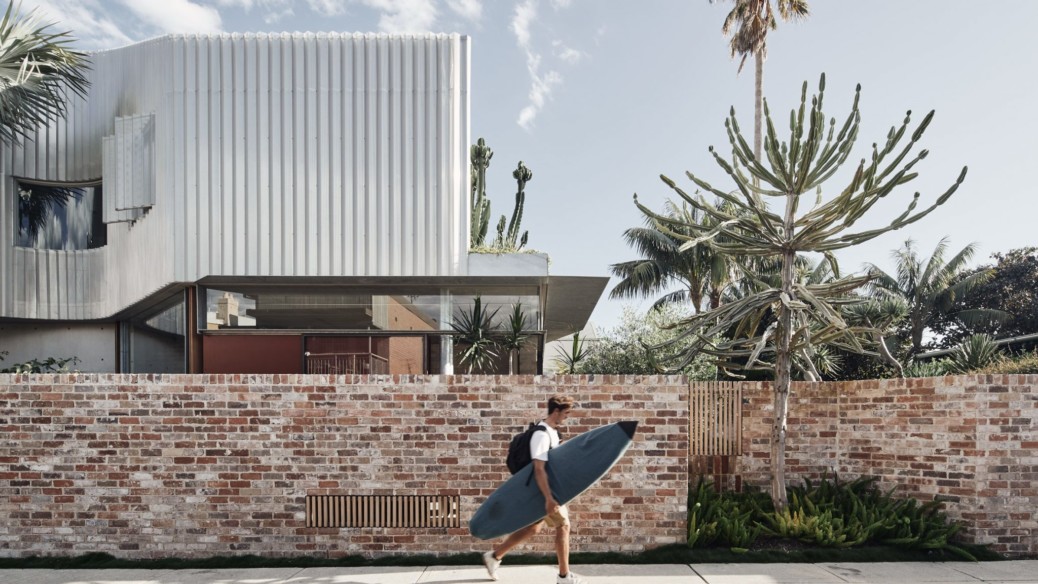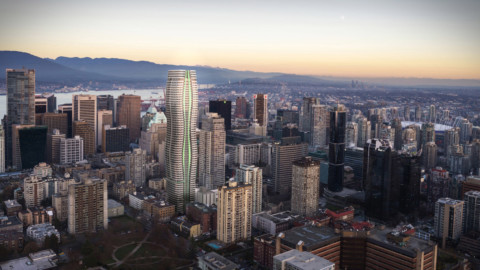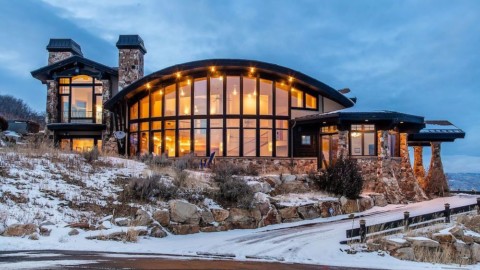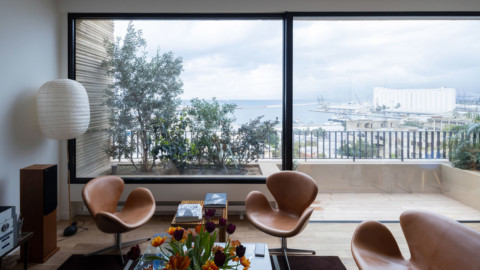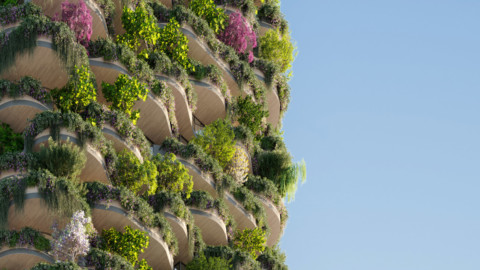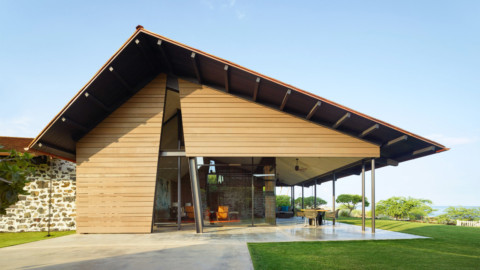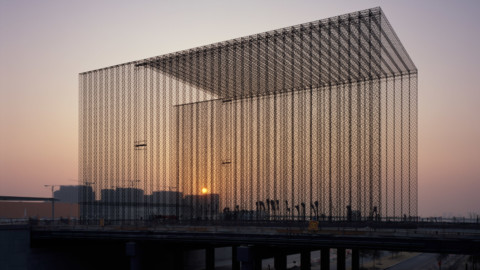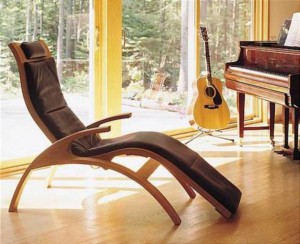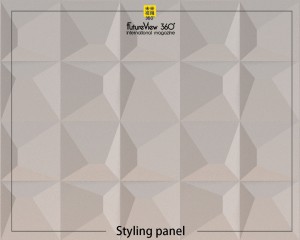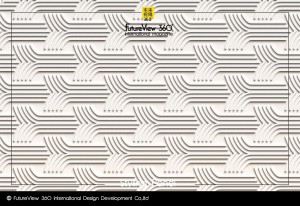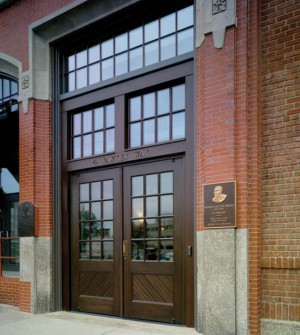Andrew Burges Architects created Bismarck House holiday home in the Sydney suburb of Bondi to showcase the work of its landscape architect client.
The house, which has been shortlisted in the house interior, residential rebirth, and urban house categories for the Dezeen Awards 2020, was designed for Will Dangar of landscape practice Dangar Barin Smith to be noticeably different from the surrounding residential neighbourhood.
安德魯·伯吉斯建築師事務所(Andrew Burges Architects)在悉尼郊區邦迪(Bondi)創建了Bi斯麥之家度假屋,以展示其景觀設計師客戶的工作。
該房屋已在2020年Dezeen獎的房屋內部裝飾,住宅更新和城市房屋類別中入圍,該房屋是專為景觀練習Dangar Barin Smith的Will Dangar設計的,與周圍的住宅區明顯不同。
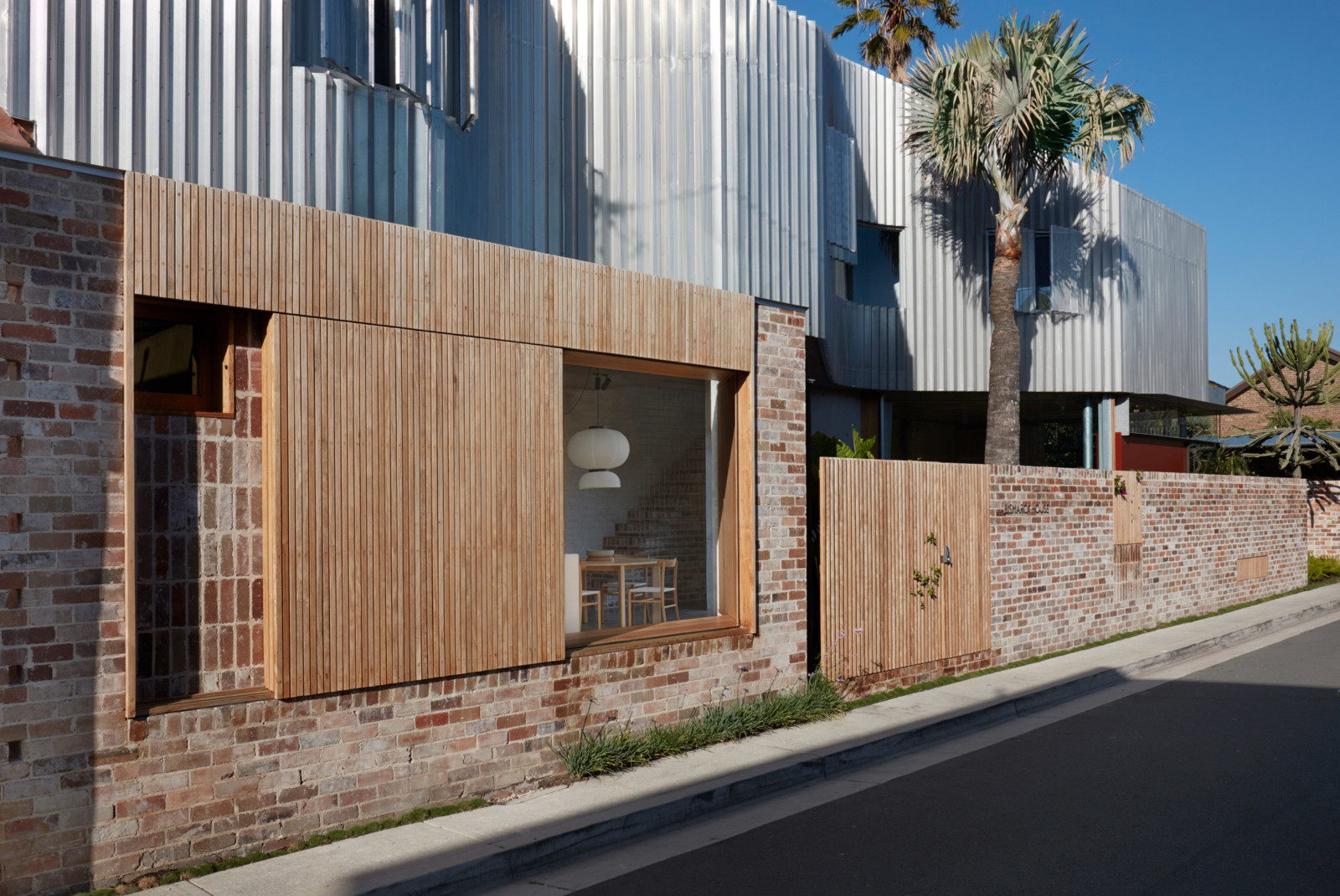
“Bondi is a popular coastal place set within beautiful geography, but marked with an agglomeration of poor quality building stock,” Andrew Burges Architects founder Andrew Burges told Dezeeen.
“The idea was that the house would function primarily as a site for holiday rentals, while also demonstrating the capacity of our client’s construction and landscape design companies.”
“邦迪(Bondi)是一個位於美麗地理環境中的受歡迎的沿海地區,但其標誌是劣質建築群的聚集,”安德魯·伯吉斯(Andrew Burges)創始人安德魯·伯吉斯(Andrew Burges)告訴Dezeeen。
“這個想法是,這所房子將主要用作度假租賃的場所,同時也展示了我們客戶的建築和景觀設計公司的能力。”
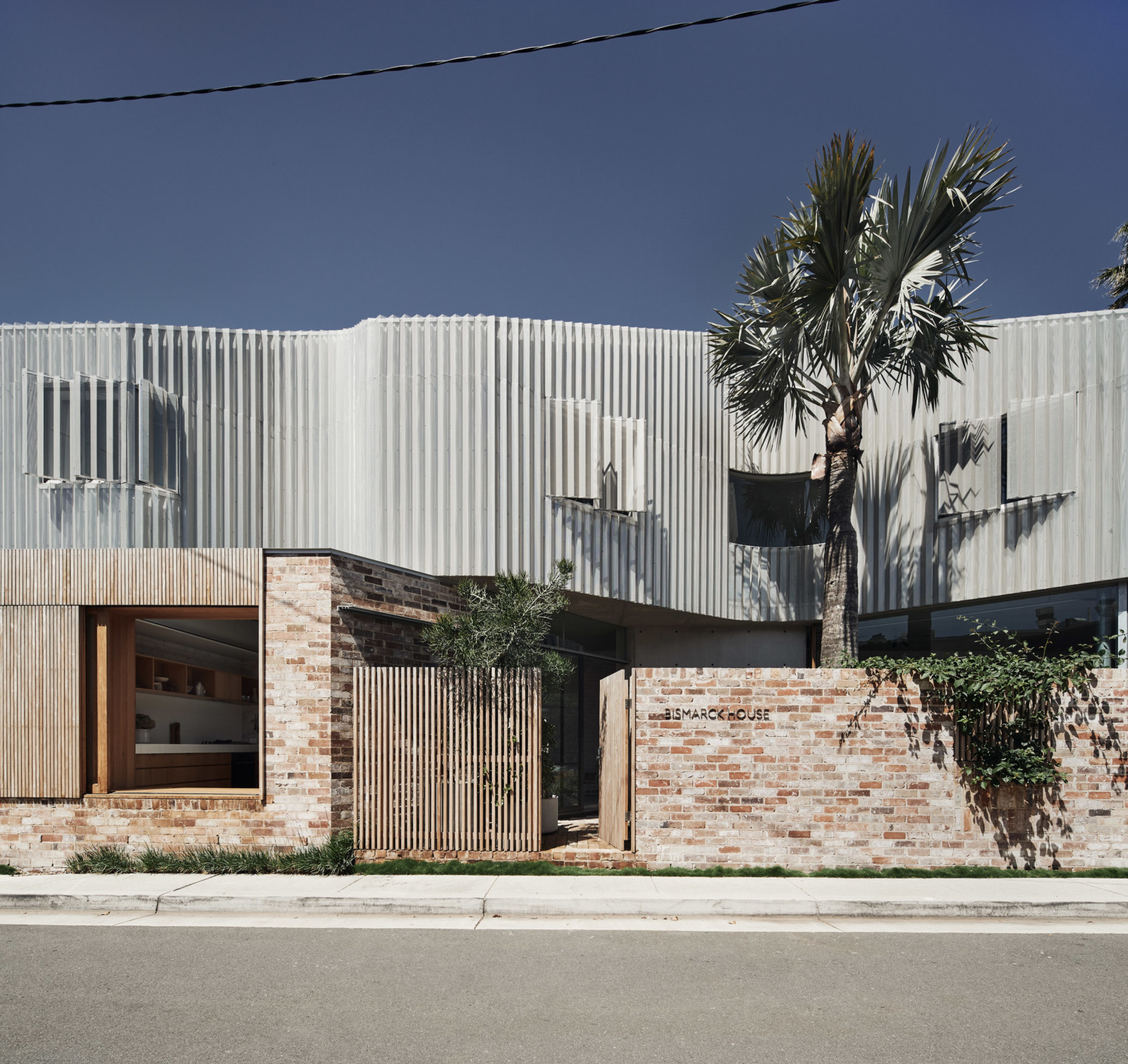
The site is located on a lane that serves shops and cafes on the Bondi Road leading to Bondi Beach, and held a single-storey building that didn’t take full advantage of the sun and air.
Andrew Burges Architects kept the front room and porch of the existing house and worked within the envelope of that space, but the rest of the original building was demolished with the bricks cleaned and reused for the new, two-storey construction.
“We were interested in the laneway for its potential for social interaction between the house and lane, and the grittiness, and also the opportunity, given the client makes gardens, to create a footprint that extended the presence of the garden along the length of the laneway,” said Burges.
該地點位於通向邦迪海灘的邦迪路的商店和咖啡館的小巷上,並擁有一棟單層建築,沒有充分利用陽光和空氣。
安德魯·伯吉斯(Andrew Burges)建築師保留了現有房屋的前室和門廊,並在該空間的圍護範圍內進行工作,但原有建築物的其餘部分被拆除,磚塊被清洗後可用於新的兩層樓高的建築。
“我們對巷道的房子和巷道之間的社交互動的潛力,耐心以及對客戶的興趣,以及給客戶創造花園的機會,以創造一個足跡,使足跡沿著整個房屋的長度擴展 巷道。”伯吉斯說。
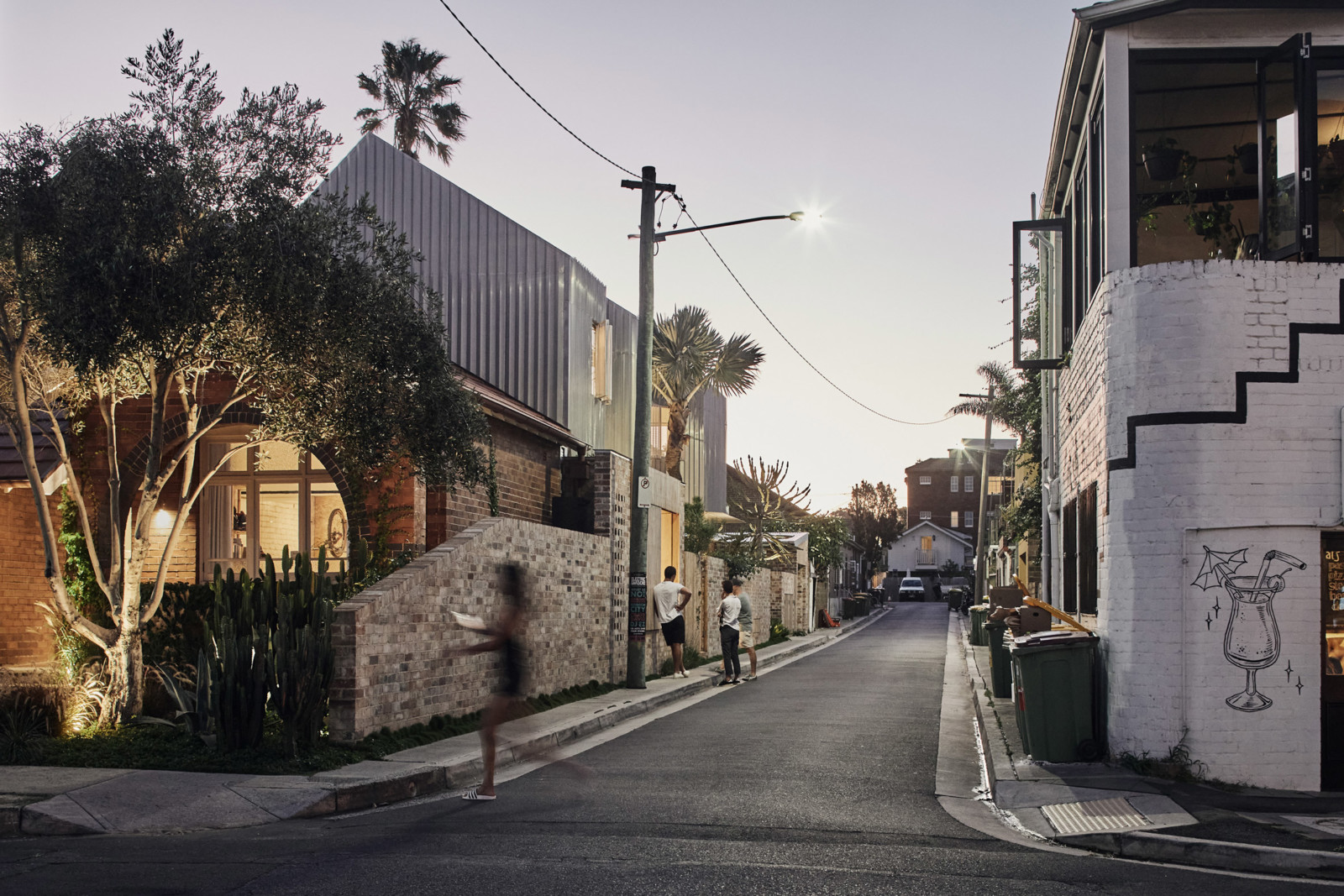
The studio worked with the idea of a “continuous garden” as a way of organising and maximising the space, and to place the garden at the heart of the scheme.
In order to create a fluid relationship between the inside and outside, the studio considered both the garden and the building itself as the ground floor of the house.
該工作室以“連續花園”的想法工作,以此來組織和最大化空間,並將花園置於方案的核心。
為了在內部和外部之間建立流暢的關係,工作室將花園和建築物本身視為房屋的底樓。
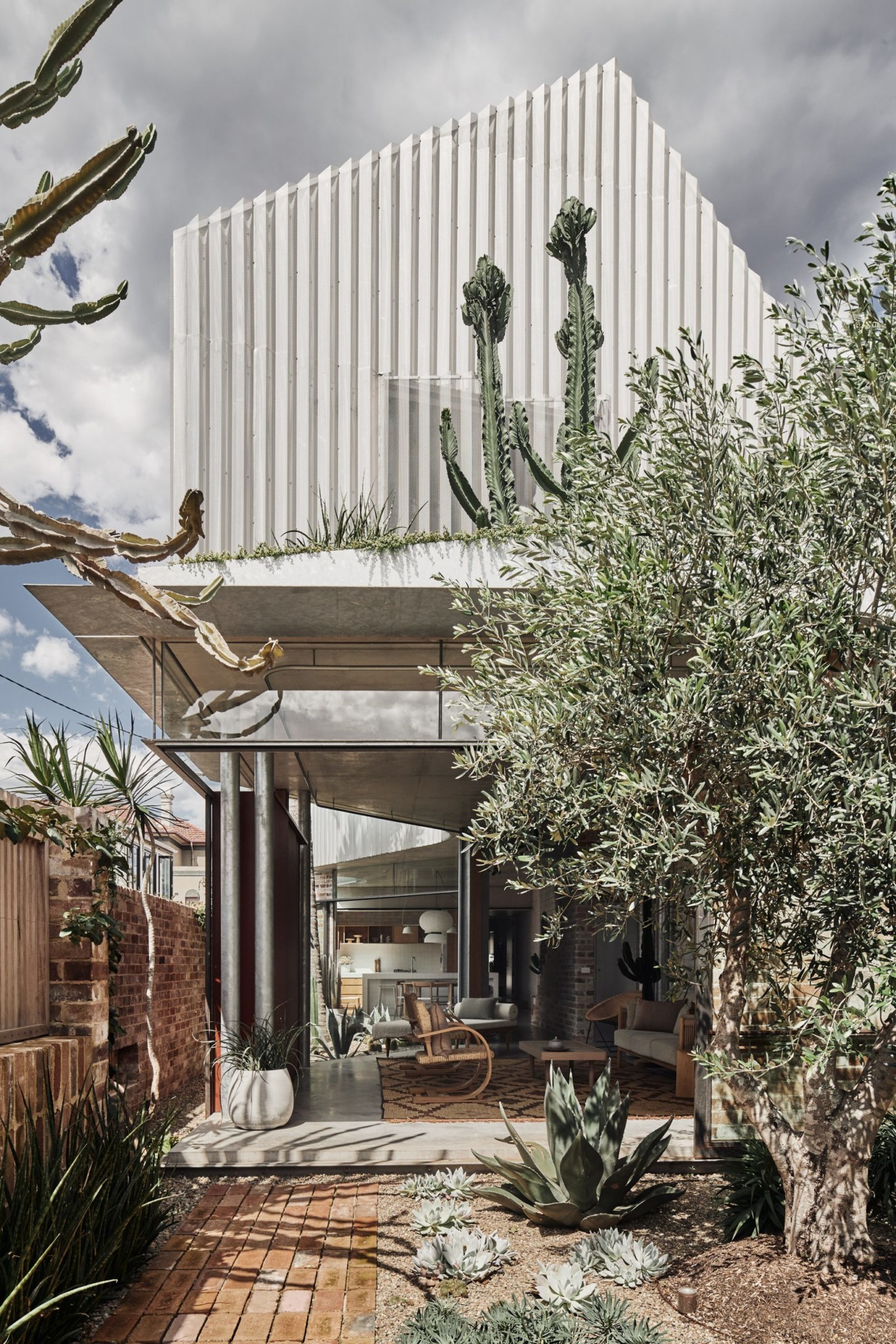
“Our starting point was to think of the site boundary of the house as the ground level house enclosure,” said Burges.
“Glazing and walls form moments within the site boundary that also happen to make thermal and rain enclosures, but these alignments have not been considered as the house perimeter – the site is the perimeter,” he added.
伯吉斯說:“我們的出發點是將房屋的場地邊界視為房屋的底層圍牆。”
他補充說:“玻璃和牆壁在工地邊界內形成力矩,這些力矩也恰好構成了隔熱和防雨的屏障,但是這些對齊方式並未被視為房屋的周長,工地就是周長。”
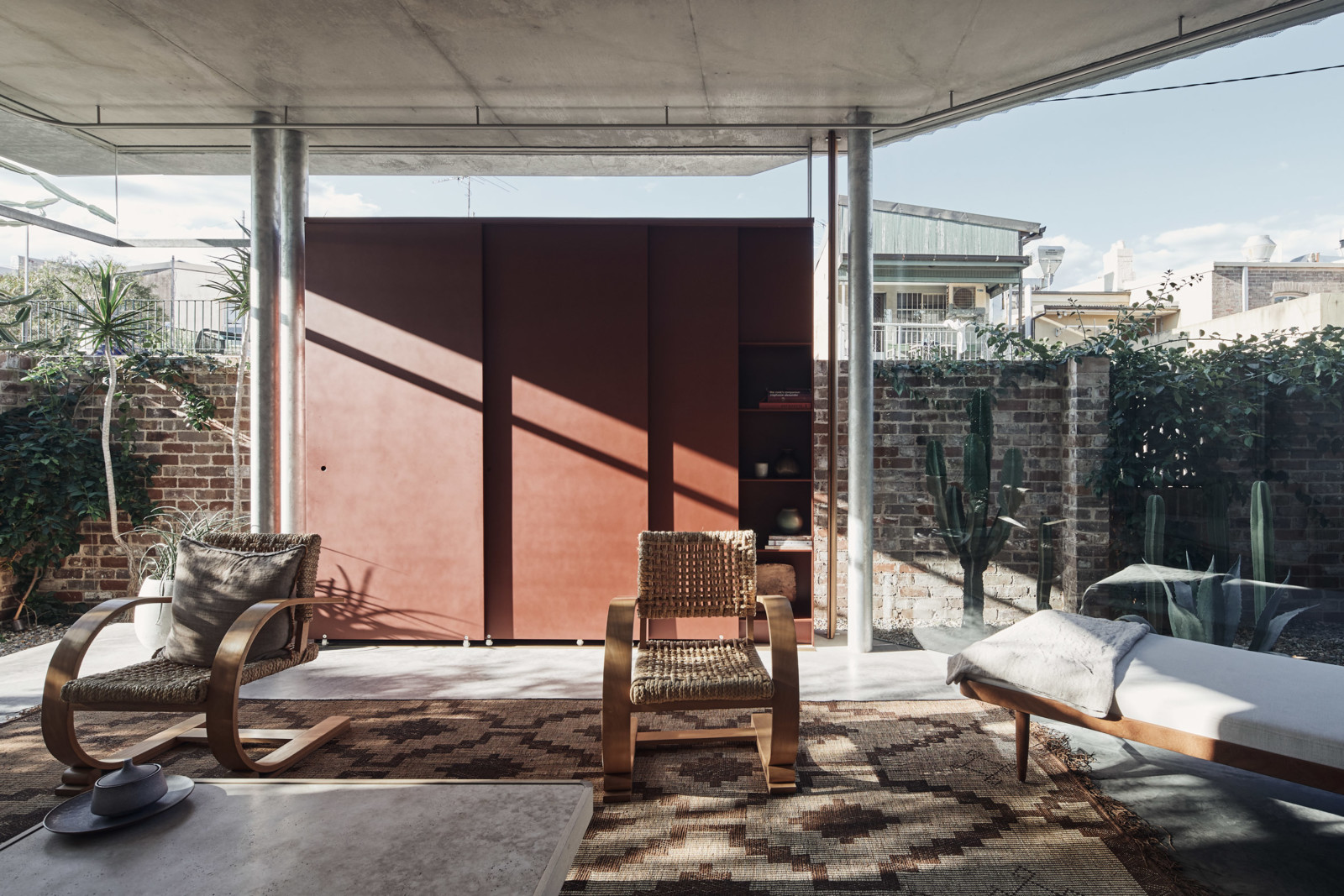
This concept influenced the materials for the ground floor, which were chosen to reinforce a robust outdoor character.
“All parts of the ground level were considered as outdoor materials, evident in the tiled kitchen, timber window seat, brick stair, mesh balustrade, face brick and mortar washed walls, raw steel-framed glazing, galvanised steel columns and awnings, and concrete floors,” said Burges.
這個概念影響了地面的材料,這些材料被選擇來增強堅固的戶外特性。
“地面的所有部分都被視為室外材料,在瓷磚廚房,木材靠窗的座位,磚樓梯,網狀欄杆,面磚和砂漿洗牆,明顯的鋼結構玻璃窗,鍍鋅的鋼柱和遮陽篷以及混凝土中都很明顯 地板。”伯吉斯說。
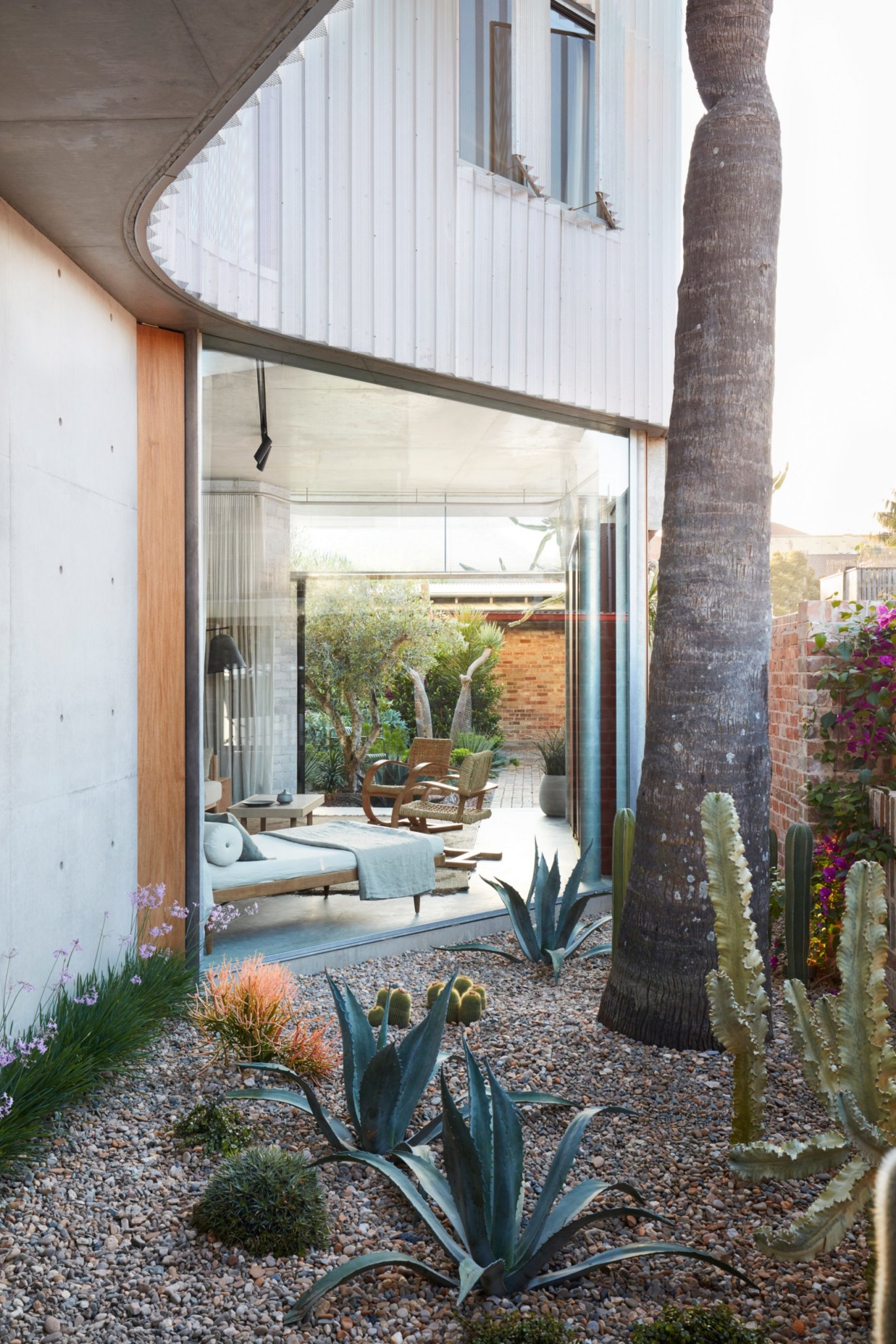
The downstairs rooms open up towards the garden and the laneway, while a succulent garden was elevated to protect the rear bedroom on the top floor from the low westerly sun.
“The site was chosen for its north-east aspect and the potential for borrowing light along the northern laneway,” Burges explained.
“The building footprint is intentionally restrained in size – to allow garden and light to fold between the lines of enclosure.”
樓下的房間通向花園和巷道,而高高的肉質花園則可以保護頂層的後臥室免受西風的影響。
伯吉斯解釋說:“選擇該地點的原因是其東北方向,並有可能沿北部巷道借光。”
“有意限制建築物的佔地面積,以允許花園和光線在圍牆之間折疊。”
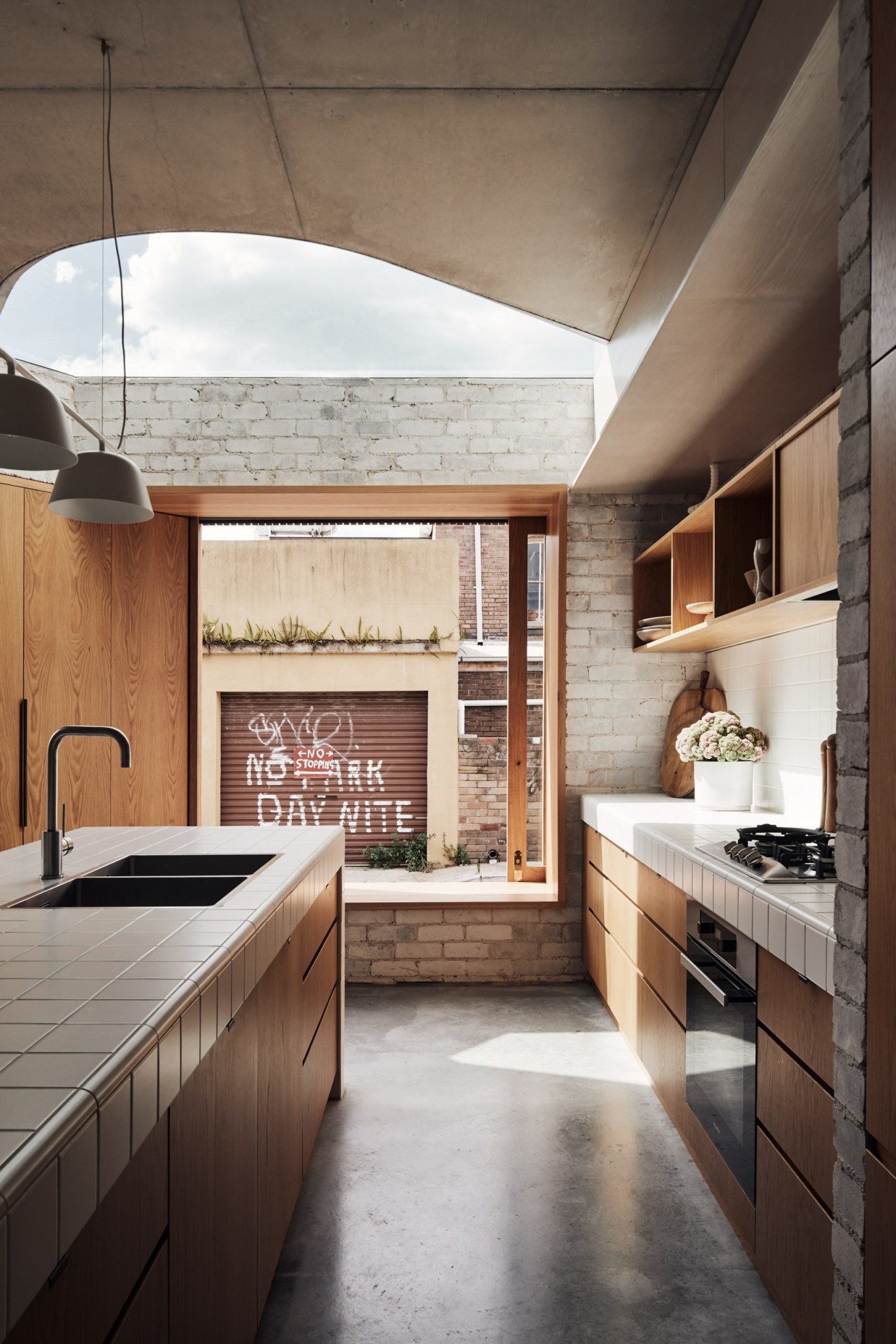
While the materials used on the ground floor were chosen for their natural, raw qualities, the upper level, which houses three bedrooms, was designed to be lighter but more monolithic.
“The exterior is defined by a screen in perforated aluminium sheet – a standard perforated sheet ordered off the shelf in mill finish aluminium,” said Burges.
“The sheet was pleated so that the pleat dimension lands on every second rise of the corrugated sheet walling that provides enclosure beneath the screen,”
雖然選擇一樓使用的材料是出於自然,原始的品質,但上層設有三間臥室,設計得更輕巧,但整體性更強。
伯吉斯說:“外部是由多孔鋁板的篩網所定義的。多孔鋁板是一種標準的多孔鋁板,訂購現成的鋁粉。”
“片材被打褶,以使褶皺尺寸落在波紋狀片壁的第二個上升高度上,從而在篩網下方提供圍護,”
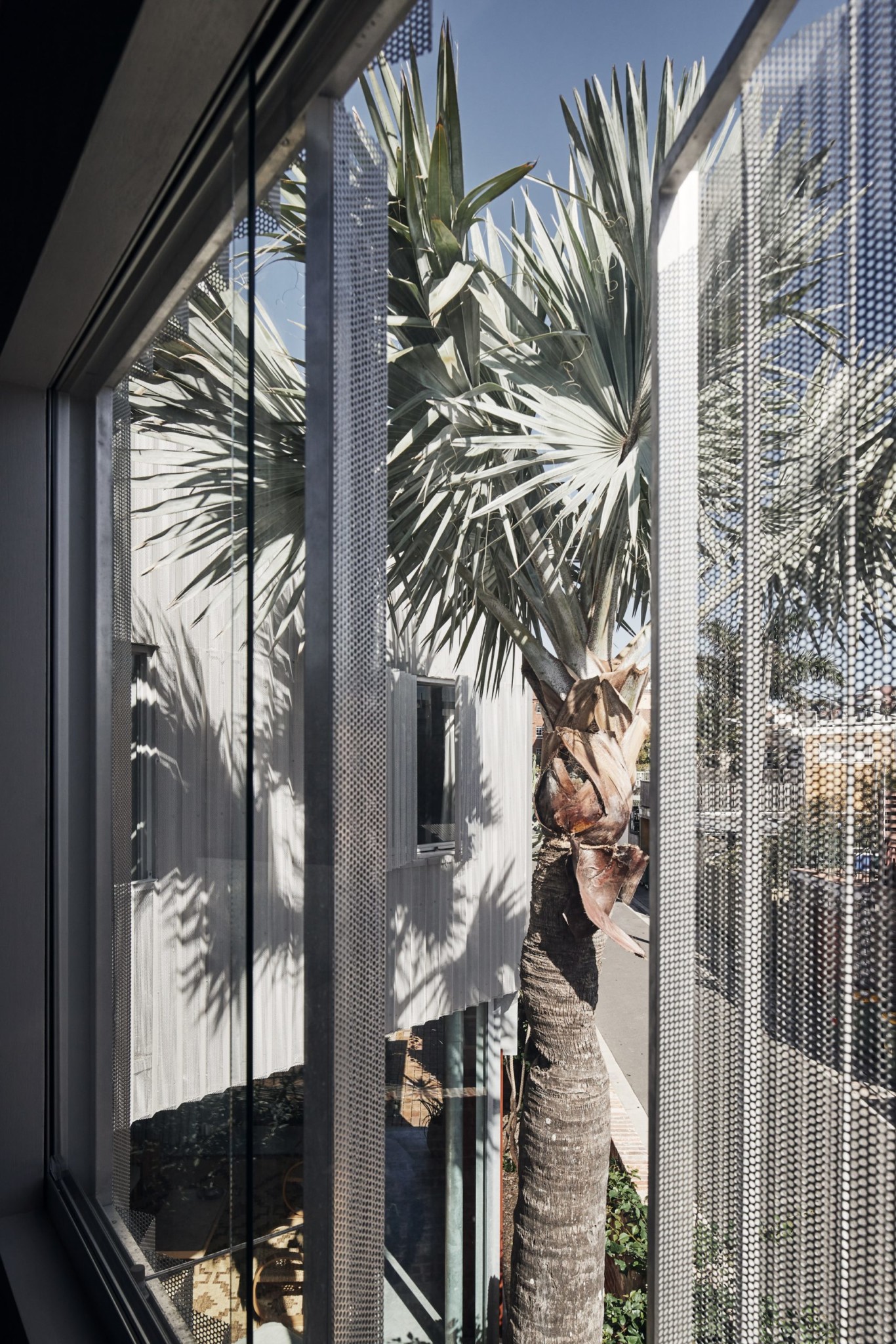
The undulating shape of the top floor helps let light into the garden below, as well as into the kitchen through a skylight.
The curved wall also means the bedrooms benefit from windows that don’t look directly out onto the buildings across the laneway.
頂層的起伏形狀使光線可以進入下面的花園,也可以通過天窗進入廚房。
彎曲的牆面還意味著臥室可受益於窗戶,窗戶不能直視整個車道。
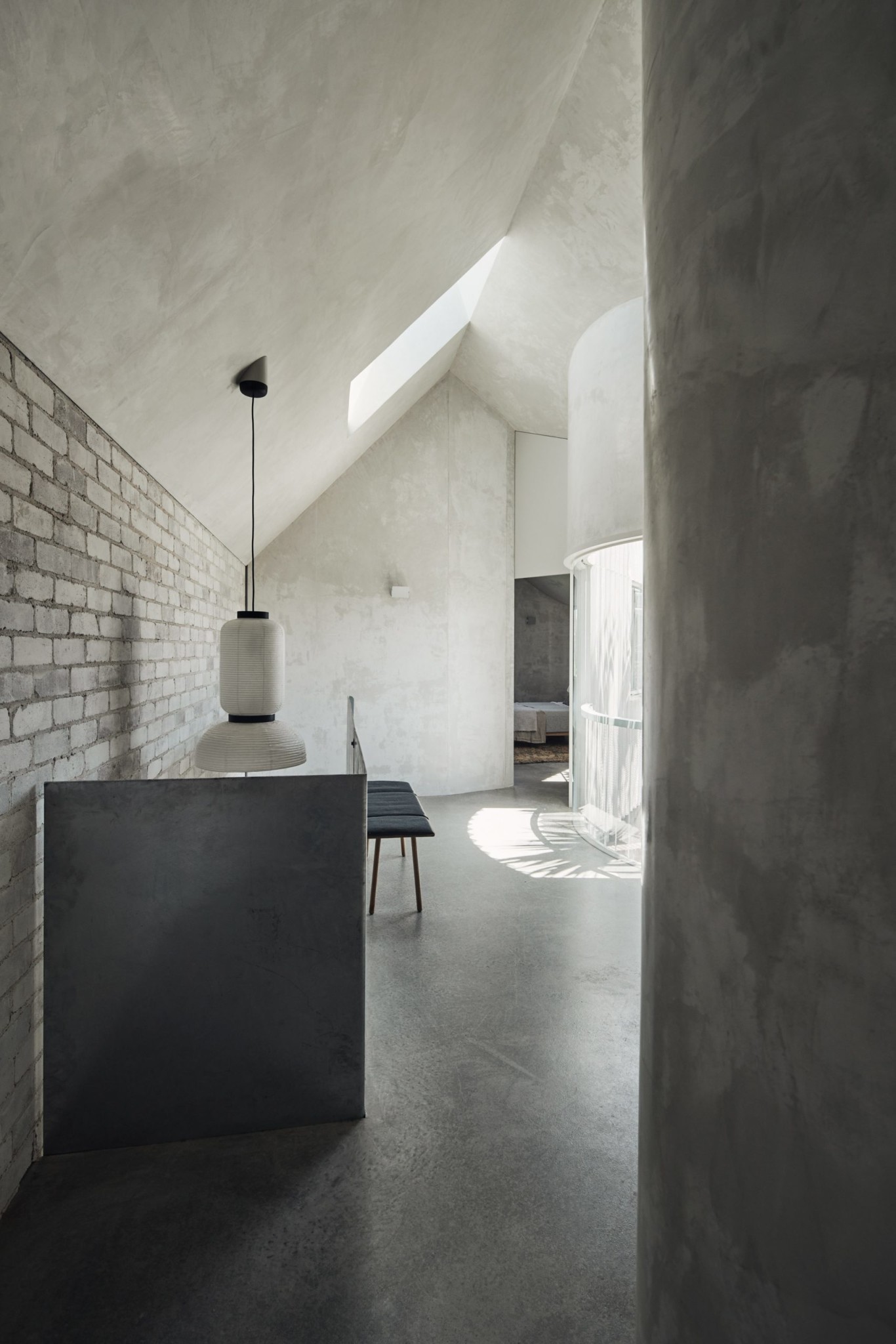
Upstairs, the interior is dominated by proyalbi, a fine-set-plaster that has been applied to the walls and ceilings.
Hardwearing concrete floors and galvanised steel handrails were used for the upper level, continuing the theme of combining function and beauty.
在樓上,室內裝飾以proyalbi為主,proyalbi是已應用到牆壁和天花板上的細膩石膏。
上層使用了耐磨的混凝土地板和鍍鋅鋼扶手,延續了功能與美觀相結合的主題。
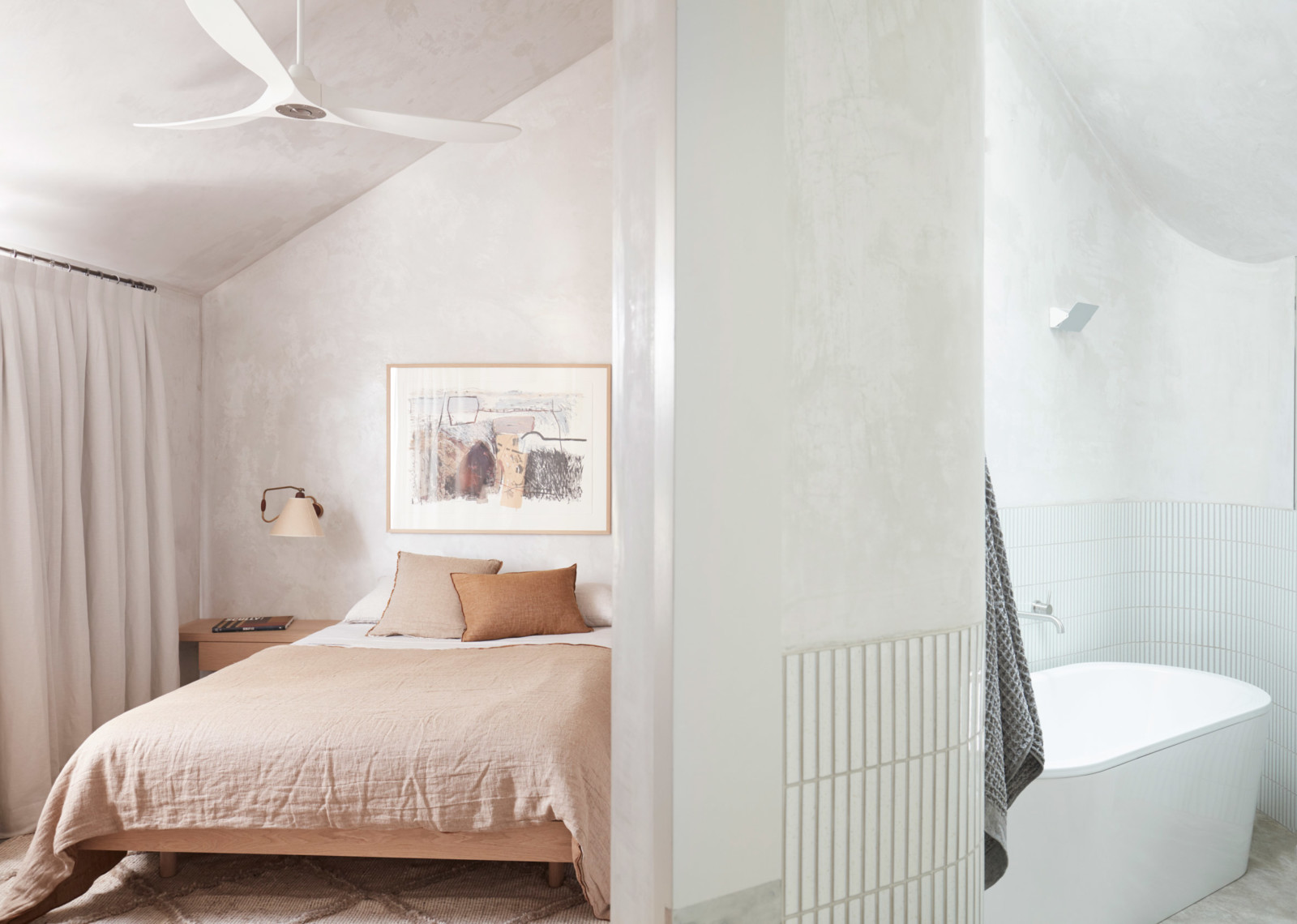
Andrew Burges Architects’ previous projects include another residential Bondi building, featuring pale brickwork and blackened wood and a Sydney warehouse transformed into a “mini city” for kids.
Photography is by Peter Bennetts unless stated otherwise.
安德魯·伯吉斯建築師事務所(Andrew Burges Architects)的先前項目包括邦迪(Bondi)另一座民居建築,該建築以淺磚砌成和發黑的木材為特色,悉尼的倉庫變成了兒童的“迷你城市”。
除非另有說明,否則攝影由Peter Bennetts執掌。
FROM:https://www.dezeen.com/2020/09/24/andrew-burges-architects-bismarck-house-bondi-sydney-garden/

